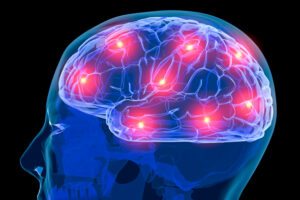Neurology
Epilepsy
Special Considerations for Women With Epilepsy
Overview
For women with epilepsy, the availability of multiple options for antiepileptic drug (AED) therapy can offer flexibility when balancing the risks and benefits of treatment during the childbearing years. The use of newer agents may help to sidestep concerns with older AEDs, such as decreased effectiveness of oral contraceptives with hepatic enzyme–inducing AEDs.
Expert Commentary
Brian D. Moseley, MD
|
|
“Ultimately, the newer AEDs that do not carry the long-term risks of the older generations are preferred whenever possible. Supplemental folic acid is important for all women of childbearing potential.”
Distinct considerations for women with epilepsy arise at different points in the life span. Catamenial epilepsy, for instance, is tied directly to certain phases of the menstrual cycle and is important to recognize, since AED therapy may require adjustment during the high-risk phase of the cycle for the patient to stay completely seizure free. Further, for young women on oral contraceptive medications, the use of older AEDs (eg, carbamazepine, phenytoin) is a concern because of drug-drug interactions that may decrease the effectiveness of the contraceptives. Newer AEDs generally do not appear to have this particular type of interaction; an exception is the potential interaction between lamotrigine and oral contraceptives (ie, the use of oral contraceptives may reduce lamotrigine levels and, therefore, effectiveness).
During pregnancy, women with epilepsy should be monitored regularly, counseled to not stop medication use, and advised to take supplemental folic acid daily to reduce the risks of congenital malformations. Physiologic changes during pregnancy can lead to significant changes in AED clearance that require dosage adjustments. The risk of teratogenicity from all AEDs is highest very early on, when most women are unaware that they are pregnant, which underscores the importance of supplemental folic acid in women of childbearing potential. In particular, valproate is associated with the highest risk of neural tube defects, and unborn children exposed to the drug have been found to have higher rates of autism spectrum disorders and learning disabilities later in life. Therefore, it is very rare that I prescribe valproate in a woman of childbearing potential; however, valproate is sometimes the only effective AED (eg, in cases of idiopathic generalized epilepsy). We must also consider that there are risks to the fetus from uncontrolled seizures during the second and third trimesters, particularly generalized tonic-clonic seizures; such seizures may cause hypoxia, placental abruption, and fetal death.
With respect to lactation, the decision to breastfeed is an individual one; we know that there are tremendous benefits of breastfeeding, and I have no problem with my patients taking AEDs while breastfeeding. Data have been reassuring regarding lower drug concentrations in the breastmilk, most AEDs are safe or moderately safe to use in women who are breastfeeding, and side effects in breastfed neonates are rare.
Ultimately, the newer AEDs that do not carry the long-term risks of the older generations are preferred whenever possible. Supplemental folic acid is important for all women of childbearing potential.
References
Birnbaum AK, Meador KJ, Karanam A, et al; MONEAD Investigator Group. Antiepileptic drug exposure in infants of breastfeeding mothers with epilepsy. JAMA Neurol. 2019 Dec 30. doi: 10.1001/jamaneurol.2019.4443. [Epub ahead of print]
Kim H, Faught E, Thurman DJ, Fishman J, Kalilani L. Antiepileptic drug treatment patterns in women of childbearing age with epilepsy [published correction appears in JAMA Neurol. 2019 May 13. doi: 10.1001/jamaneurol.2019.1257]. JAMA Neurol. 2019;76(7):783-790.
Tomson T, Battino D, Bonizzoni E, et al; EURAP Study Group. Declining malformation rates with changed antiepileptic drug prescribing: an observational study. Neurology. 2019;93(9):e831-e840.
Vélez-Ruiz NJ, Pennell PB. Issues for women with epilepsy. Neurol Clin. 2016;34(2):411-425.











